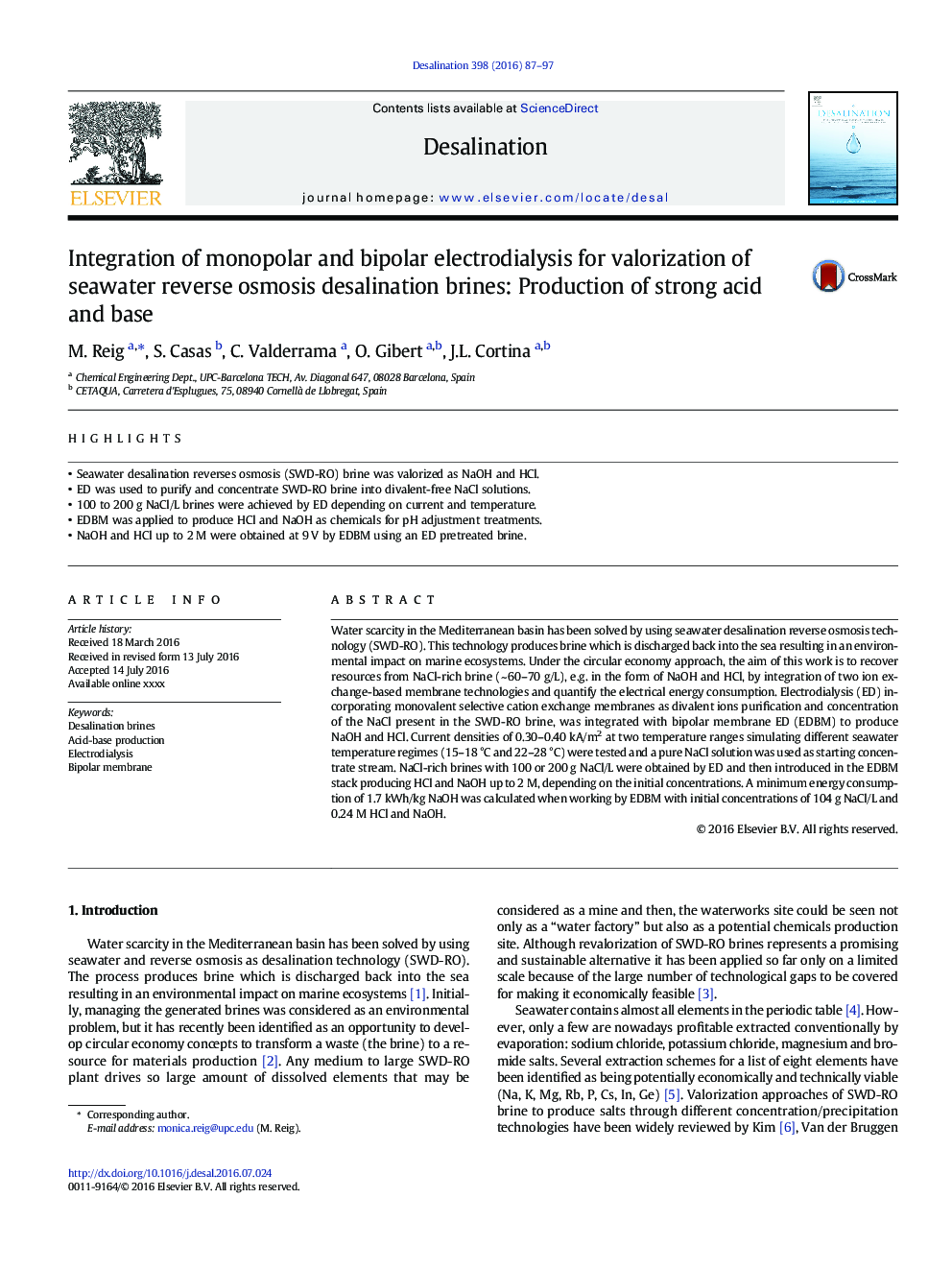| کد مقاله | کد نشریه | سال انتشار | مقاله انگلیسی | نسخه تمام متن |
|---|---|---|---|---|
| 622694 | 1455297 | 2016 | 11 صفحه PDF | دانلود رایگان |
• Seawater desalination reverses osmosis (SWD-RO) brine was valorized as NaOH and HCl.
• ED was used to purify and concentrate SWD-RO brine into divalent-free NaCl solutions.
• 100 to 200 g NaCl/L brines were achieved by ED depending on current and temperature.
• EDBM was applied to produce HCl and NaOH as chemicals for pH adjustment treatments.
• NaOH and HCl up to 2 M were obtained at 9 V by EDBM using an ED pretreated brine.
Water scarcity in the Mediterranean basin has been solved by using seawater desalination reverse osmosis technology (SWD-RO). This technology produces brine which is discharged back into the sea resulting in an environmental impact on marine ecosystems. Under the circular economy approach, the aim of this work is to recover resources from NaCl-rich brine (~ 60–70 g/L), e.g. in the form of NaOH and HCl, by integration of two ion exchange-based membrane technologies and quantify the electrical energy consumption. Electrodialysis (ED) incorporating monovalent selective cation exchange membranes as divalent ions purification and concentration of the NaCl present in the SWD-RO brine, was integrated with bipolar membrane ED (EDBM) to produce NaOH and HCl. Current densities of 0.30–0.40 kA/m2 at two temperature ranges simulating different seawater temperature regimes (15–18 °C and 22–28 °C) were tested and a pure NaCl solution was used as starting concentrate stream. NaCl-rich brines with 100 or 200 g NaCl/L were obtained by ED and then introduced in the EDBM stack producing HCl and NaOH up to 2 M, depending on the initial concentrations. A minimum energy consumption of 1.7 kWh/kg NaOH was calculated when working by EDBM with initial concentrations of 104 g NaCl/L and 0.24 M HCl and NaOH.
Journal: Desalination - Volume 398, 15 November 2016, Pages 87–97
